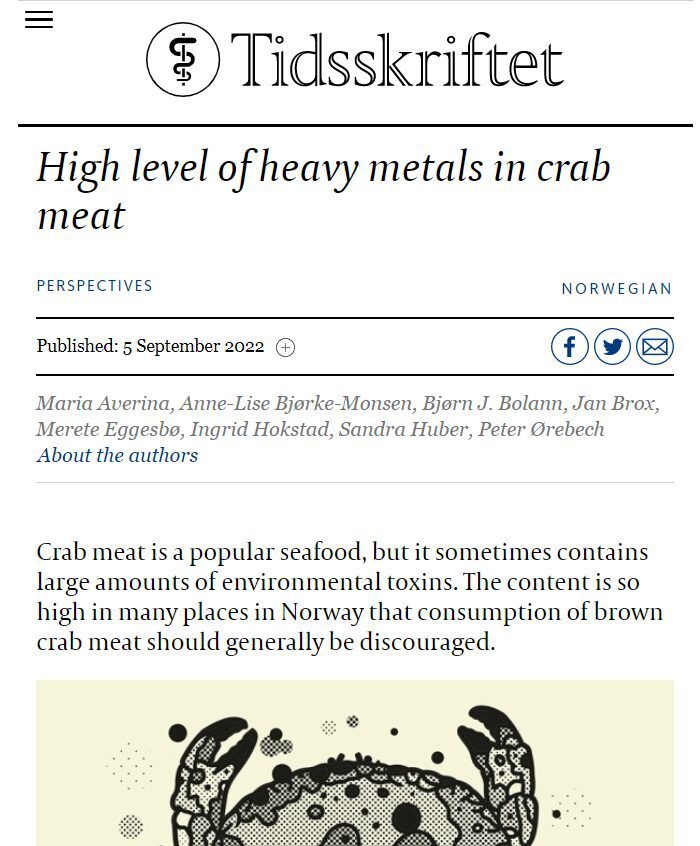 Nú er svo komið að magn þungmálma er orðið það mikið í kröbbum í norskum fjörðum að fólki er ráðlagt frá því að snæða þá. Vísbendingar eru um að orsökin sé mengun frá sjókvíaeldi á laxi.
Nú er svo komið að magn þungmálma er orðið það mikið í kröbbum í norskum fjörðum að fólki er ráðlagt frá því að snæða þá. Vísbendingar eru um að orsökin sé mengun frá sjókvíaeldi á laxi.
Mengun af völdum arseniks, kvikasilfurs, kopars, blýs, kadmíums og annarra þungmálma hefur snaraukist í fjörðum við Noreg á undanförnum árum. Sú þróun hefur vakið spurningar því hún er í beinni andstöðu við hertar mengunarvarnir gegn því sem berst í sjó frá landi.
Í greininni, sem hér fylgir, er farið yfir rannsóknir sem sýna að líklegast er um að kenna mengun frá sjókvíaeldi á laxi. Kopar er notaður í ásætuvörnum á netin og í fóðrinu má finna leifar af þungmálmum, en hluti af fóðrinu auk alls úrgangs frá eldislaxinum safnast saman í þykkt lag á botninum undir sjókvíunum.
Umhverfishættan vegna mikillar áburðarnotkunar í landbúnaði er vel þekkt. Á undanförnum árum hefur hlutfall sojabauna, ræktuðum á risaökrum þar sem Amazonskóginum hefur verið eytt, farið hratt hækkandi á allra síðustu árum.
Umhverfisskaði sjókvíaeldis teygir sig víða. Hugsið ykkur það rugl að ryðja regnskóg í Suður-Ameríku til að rækta þar sojabaunir sem er svo hellt í opinn sjó í Norður-Atlantshafi í tvö ár til að fóðra eldislax sem er svo flogið á markað víða um heim.
In line with international agreements, emissions of heavy metals have been reduced (7). Between 1995 and 2019, emissions of cadmium and mercury were reduced by 80 %, and arsenic by 35 %. Emissions of lead to air have also been significantly reduced, though ammunition remains a considerable source of lead in soil.
Nevertheless, there are still large accumulations of both inorganic and organic pollutants in Norwegian fjords, where the concentrations of heavy metals are 2–4 times higher than in Norway’s coastal waters. The Sørfjorden in Hardanger is an example of the extensive pollution caused by industrial activity. Here the levels of cadmium, lead, mercury, dioxins and polychlorinated biphenyls are so high that the recommendation is not to eat crab, shellfish or fish from parts of the fjord. The Norwegian Food Safety Authority (NFSA) keeps a list of areas where the consumption of certain types of seafood is not recommended.
… There has been a significant increase in toxic metals in brown crab meat in recent years. Between 2016 and 2018, the average level of cadmium increased by 137 %.
…The increase in heavy metals over a relatively short period of time indicates that crabs are exposed to ongoing and increasing pollution. It has been difficult to explain this, as emissions of various toxic elements have generally been reduced in Norway. The crabs in the study by Ervik et al. were caught at various locations in one of Norway’s main aquaculture areas. There are ten fish farms in this area, the oldest of which has been in operation since 1996.
In 2018, a total of 1.35 million tonnes of farmed salmon and trout (wet weight) were sold in Norway, which required 1.8 million tonnes of fish feed (dry weight) (14). The fish feed contains both inorganic and organic pollutants. The environmental toxins that are not deposited in the farmed fish are left at the bottom of the fjord under open farming cages, in the form of uneaten feed and fish faeces. …
The emissions from uneaten feed and fish faeces are spread or accumulated depending on local currents and will impact on the facilities to varying degrees. In 2013, the Norwegian Environment Agency examined cadmium and copper levels in crabs caught at a distance of 80–1000 metres from three salmon farms in Sogn og Fjordane, Møre og Romsdal and Nord-Trøndelag respectively. Aquaculture uses around 1700 tonnes of copper annually to impregnate farming nets (figures from 2019), and around 80–90 % of this leaks into the sea and accumulates on the seabed.
